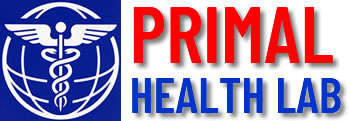Sciatic nerve pain, commonly known as sciatica, can be debilitating. The pain typically radiates along the path of the sciatic nerve, which extends from the lower back down to the feet. Fortunately, there are several effective strategies to alleviate this discomfort.
Understanding Sciatica
Sciatica is often caused by a herniated disk, bone spur on the spine, or narrowing of the spine (spinal stenosis) compressing part of the nerve. This causes inflammation, pain, and often some numbness in the affected leg. Although the discomfort can be severe, most cases can be managed with non-operative treatments.
Non-Medicinal Relief Methods
Stretching and Yoga: Gentle stretching exercises can help relieve sciatic nerve pressure. Yoga is particularly effective because it combines stretching and strengthening exercises with deep breathing, which can help reduce overall tension and pain.
Hot and Cold Packs: Initial treatment typically involves the application of cold packs to reduce inflammation and numb sore tissue, followed by heat therapy to relax tense muscles that may be contributing to pressure on the sciatic nerve.
Maintain Proper Posture: Poor posture can exacerbate sciatica symptoms. It’s important to maintain proper posture while sitting, using ergonomically designed furniture that supports the lower back and promotes good posture.
Medical Treatments
Physical Therapy: This is a cornerstone of sciatica treatment. A physical therapist can show you how to perform stretches that promote healing without aggravating the condition.
Medications: Over-the-counter pain relievers such as ibuprofen or naproxen can reduce inflammation and pain associated with sciatica. In more severe cases, your doctor may prescribe muscle relaxants or even stronger painkillers.
Advanced Options
Steroid Injections: For persistent sciatica, your doctor might recommend a corticosteroid injection into the area around the nerve root. This can suppress inflammation around the irritated nerve and help alleviate pain temporarily.
Surgery: This is typically the last resort, considered only when the compressed nerve causes significant weakness, loss of bowel or bladder control, or if the pain progressively worsens. Surgery aims to remove the cause of the nerve pressure.
Lifestyle Modifications
Exercise Regularly: Keeping your body healthy with regular exercise can prevent sciatica from recurring. Focus on strengthening the muscles of your abdomen and back, which help support your spine.
Smart Lifting Techniques: Always bend your knees and keep your back straight when lifting anything. This technique helps avoid straining your lower back, reducing the risk of herniated disks.
Alternatives and Complementary Therapies
Acupuncture: Some people find relief from sciatic pain through acupuncture. This practice involves inserting thin needles into specific points on the body to release biochemicals that reduce pain.
Massage Therapy: Massage might help alleviate muscle spasms that contribute to sciatica. It can also boost circulation, which may help to speed up recovery from muscle and nerve irritation.
Primal Labs Advanced Nerve Support: You can also try a Primal Advanced Nerve Support by Dr Marlene Merritt.
Final Reflections on Sciatica Management
Dealing with sciatica involves a combination of lifestyle changes, physical therapy, and sometimes medical intervention. Each person’s situation is unique, so it may take some time to find what works best for you. Consulting healthcare professionals and considering a holistic approach can lead to effective management of sciatica pain.
